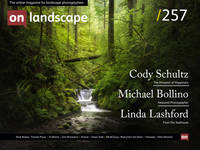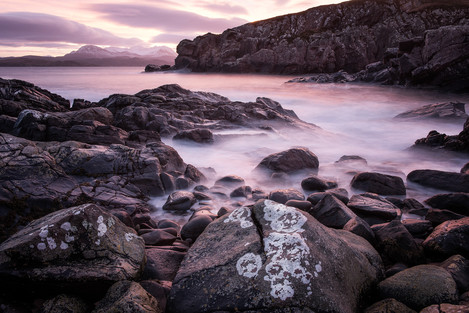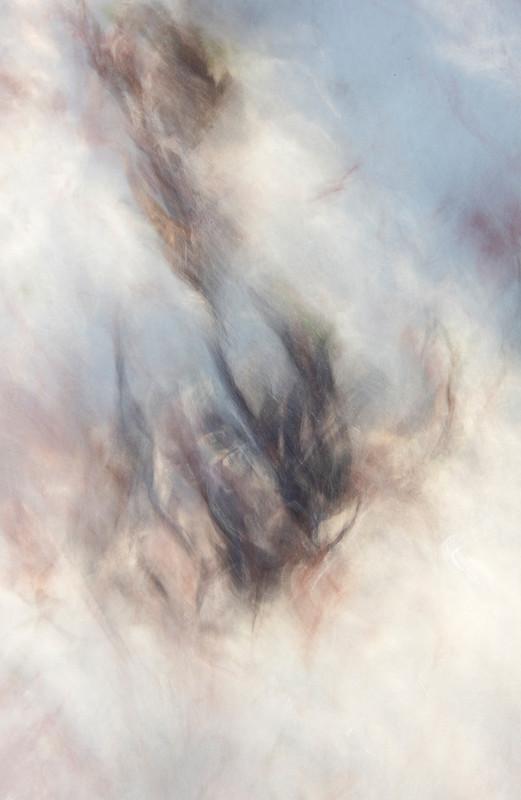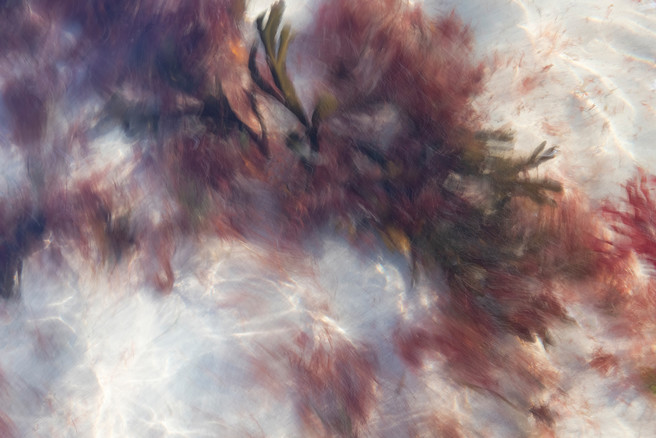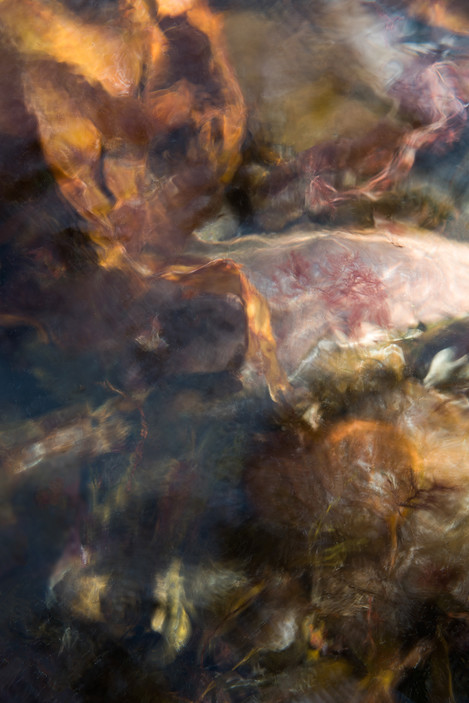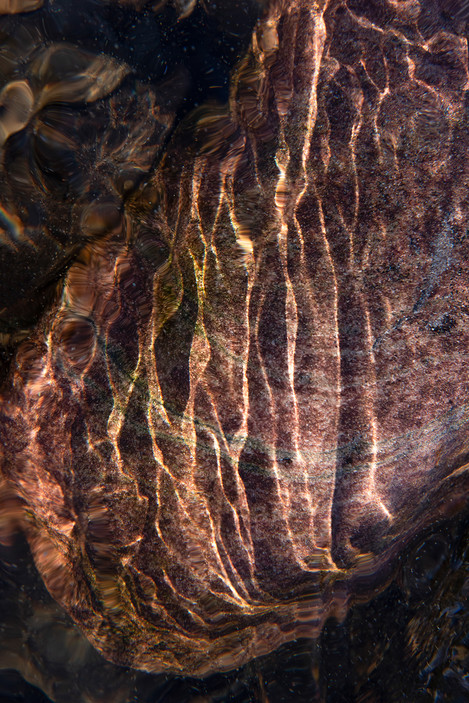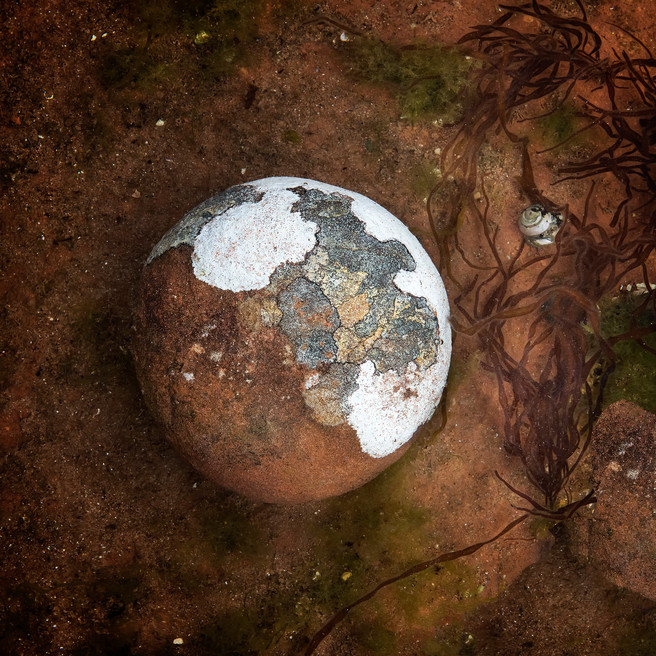A Kickstarter Project
Linda Lashford
Linda Lashford is a professional travel photographer and writer who has a beat that extends across Europe. Her photography arises out of encounters with landscape and people and is often characterised by memory, fragility and loss.
lindalashford.photoshelter.com
'From the seahouse' is a collection of images and words that have formed over five successive winters of living, writing, and photographing from a remote Scottish beach.
Although primarily a photographic book, 'from the seahouse' also holds a story. A story that begins when, exhausted by travel and depleted by loss, I rent a neglected croft-house at the edge of the sea. Stilled by the act of photographing,
My thoughts of the seahouse will always be dominated by an impression of containment: a quiet wrapping of moor around the house, truncating sightlines and forcing me to look seawards, out towards the Summer Isles and the distant hills of Coigach and An Teallach.
Immediately beneath the house, a dip of warrened machair seeps into an arc of wind-planed beach, where the first, and the most powerful, of three winter burns slices across the sand. It carries uncertainty: changing course daily, moving stones, opening fissures. Then, after 800m or so, the sweep of sand breaks against a spine of shallow rocks. A rise of dune and marram grass leads into a second, shell-rich bay where the herons fish. Here, a tidal lagoon, bottomed by filigreed slabs of coloured rock, pulses to a mirror back. A third rise and the landscape changes once again, into a run of brick-red cliffs and a rough, scarified foreshore that holds more pools of floating weed and richly marked stones.
Unable to drive, I am bounded by the distance I can walk, and so this short stretch of coast becomes the landscape of my imagination.
Stilled by the act of photographing and unfettered from time, images surface quietly. Banishing thoughts of 'too bright', 'too dull', I let myself wander, adjusting myself to the height of the tide and the strength of the wind.
As night draws in, I write, drawing words from the same physical and emotional landscape as the images. Whilst the photographs have a stillness that belies the tumult of the winter shoreline, my thoughts and words explore that turmoil: the raw physical power and fugacity of the winter environment and my internal world, where unsettling memories and unresolved grief are unlocked by a sudden scent or a turn of a stone. These are the hardest hours of the project - confronting the issues that brought me to the beach and probing the connections between the life I have lived and the images I make.
My father was a keeper of stones. He kept them in a drawer and on special days would take them out and name them. An incantation that conjured worlds where devils lost their toenails and snakes were turned to stone. Where insects began as woodlice and featherless birds skimmed the skies.
On perfect days he would let me choose one. My hand would hover between the glistening pull of mica schist and the delicate fronds of a crinoid fan. And, although the mica was buttery and shone with the softest mercurial light, I loved the life within the crinoid. The star like segments of its fractured stem. Tracing their outline, I would imagine it whole and living, its tentacles moving with the brush of passing prey'. - extract from 'A Memory of Stones.
My father and I had met over stones.
The impulse to draw the words and images into a book came in waves. At first, driven by the idea to create one beautiful object and with a passion for printing, I saw 'from the seahouse' as an 'artist's book': a single book, printed by me and bound in collaboration with an artisan bookbinder. An invitation to exhibit made me think that such a book could become a focus, turning an exhibition into an installation, comprising a book, prints and a soundscape of the beach. But, as I explored the options, I ran into difficulty finding paper of the right size and grain direction that would allow me to realise the drum leaf folded, lay-flat structure I was looking for. And so, as I reluctantly moved towards accepting the idea of outsourcing the printing, I began to re-think the value of the book.
Asking 'artistic' friends and fellow photographers to review the spreads, I came to see that, by tying together my emotional response to the beach and the images that arose from it, the collection had gone beyond a simple portrait of a place and was reflecting my personal creative journey. And so, I settled on printing 100 copies to accompany a mid-summer installation and having designed the layout, I put myself in the hands of exacting bookmaker and friend, Eddie Ephraums (Envisage books), to make the final tweaks and supervise the printing. The plan is to print 'from the seahouse' on high quality Mohawk Eggshell paper and, because of the weight of the paper, to make two volumes, hand-glued and finished. Which is all very well, but as many of you will have experienced, comes at a cost.
This brings me to my experience of launching a crowdfunding campaign to help manage the printing costs. I chose Kickstarter rather than some of the other crowdfunding platforms because of its arts focus, and I could see that it had plenty of photography projects attempting to raise funds. I wasn't especially daunted by Kickstarter's condition that you must reach your full funding goal or receive nothing.
In preparation for the campaign, I created lists of potential backers: friends, family, my photography network, and people who live locally and who might be interested in having a book about their place. For months before, I posted regularly on social media, targeting and building up a substantial following within the LinkedIn photography groups. I thought hard about a hierarchy of rewards, essentially incentives to encourage backers to pledge. These included prints which could reward small pledges and higher value rewards, including the book itself – which, of course, becomes a way of pre-selling the book. What I didn't think hard enough about was the value of a 'marketing' video. Kickstarter advises that 80% of successful projects have a video, and with insufficient pre-thought, the making of the video became the toughest challenge of the pre-launch phase. If I had my time over again, I would have made a better plan.
As of today (23rd May), I am 12 days into a 60-day campaign and the project is 66% funded {77% as of 2nd June - Ed}, which is brilliant news. Most of the pledges have come from my friends and from my photographic network, the majority of whom are choosing to pre-order a book. Of course, it's not rocket science that my closest social network has responded early and that, as time goes on, I can expect support to dwindle, unless I can recruit new backers.
I am still trying to think creatively about where they might come from and the best time and ways to reach them. Could they come from the larger Kickstarter community? The platform certainly has a large philanthropic following which is eager to engage with projects. One of the most consistently successful photographic projects is the "Remembering wildlife" series by Margot Raggett. She brings together images from some of the world's top wildlife photographers and makes beautiful coffee table books. It's easy to see a wide appeal, especially as profits on sales go to wildlife charities. Her most recent 'Remembering bears' made almost £150,000. However, most of us, including me, have less globally compelling projects! So far, I have seen 20% of the funds raised coming from the Kickstarter community.
Would I do it again? Possibly. It's certainly a lot of work, but if I can reach the funding target and bring the book to print, it will all have been worthwhile! And should I exceed the target, then not only will it help fund the framing costs for the exhibition, but maybe I could think about the commissioning of a bookbinder to create that one 'beautiful object'.
If you are curious to learn more, the link below will take you to the 'from the seahouse' campaign page where there is a second link from where you will be able to see all the images as a flipbook.

